Grow Lights for indoor cannabis cultivation
Lighting is one of the most important factors when growing marijuana indoors. It allows us to set the desired photoperiod for our plants (number of daily hours of light and darkness) and thus decide if they must grow or bloom. Furthermore, by choosing the correct light spectrum we make sure that the growth and bloom of our plants is optimal, so our cannabis seeds or clones can perform their normal functions.
In this article we invite you to one of Philosopher Seeds grow rooms to learn more about this crucial aspect, from what types of light are mainly used to how to use them properly, so you can get the best yields from your crops.
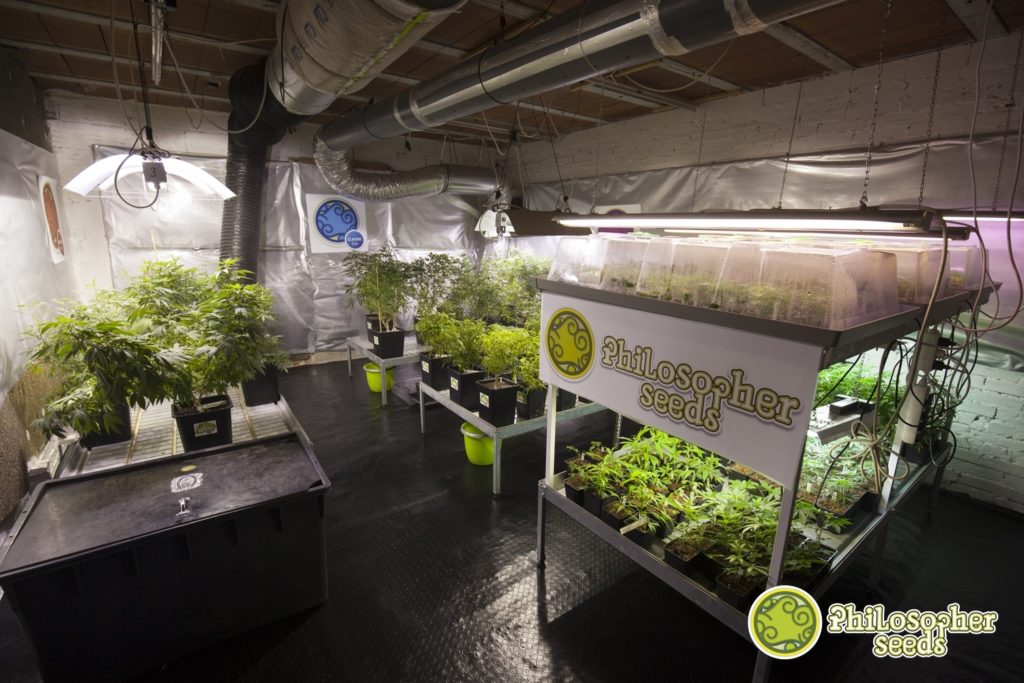
Grow lights for the growth of cannabis plants
The best option for most growers - essential for a seed company - is to have separated vegetative and flowering rooms. This means that a certain type of lights is used in each type of room, and also a specific photoperiod for each stage of the plants.
We induce our plants to grow continuously with a photoperiod of 18 hours of light and 6 hours of darkness per day. There are different types of light sources suitable for this stage. Cannabis doesn't need large amounts of light to grow, although it does like white light. If we increase the power of our lamps we'll basically notice a faster development of the plants, which create new shoots and branches more easily. Let's take a look at the most commonly used lamps for the growth stage:
- MH: Also known as Metal-Halide, they're a type of high intensity discharge (HID) lamps, and are the favourites of Philosoper Seeds breeders and growers, especially for keeping mother plants and growing plants before switching to bloom. They have a broad spectrum (white) and can be found in different powers. They need a ballast to operate and are normally mounted on reflectors to ensure optimal light distribution on the canopy. The distance between the bulb and the plants mainly depends on the power of the lamp, also on the temperature on the tops of the plants. Normally, 250W systems are placed around 25-35 cm of the tops, while 600W systems around 40-60 cm. Some growers also use this type of lamps during the stretch period to limit the growth of the plants before they start developing buds.
- Fluorescents and CFLs: Perhaps the best option for amateur growers who only need to keep a few plants or grow them a little bit before bloom. They produce little heat so can be mounted on a reflector closer to the plants, about 15-25cm. They're also great for the hottest months of the year. On the other hand, CFL lamps (Compact Fluorescent Lamp) are nothing but fluorescent tubes in the shape of a conventional bulb and with screw thread contact, so they can be used in most reflectors and lampholders available on the market. They're mainly used to root cuttings and start seeds.
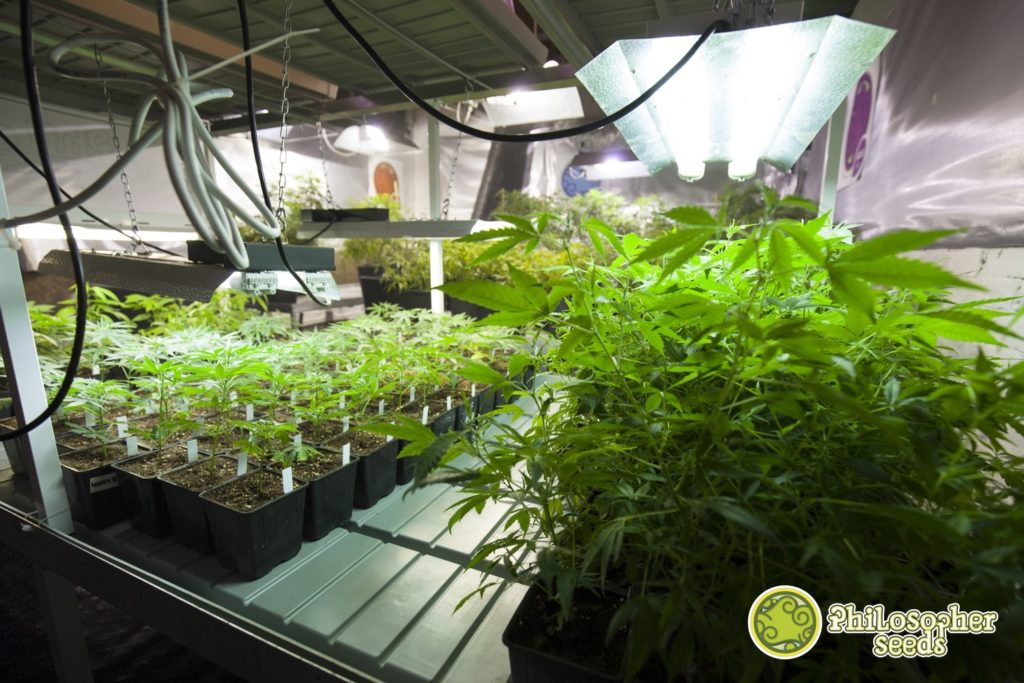
- LED: As fluorescent tubes, they produce little heat and can be used - in most cases - throughout the year without much problem. Some LED systems have a switch to change the spectrum for growing or flowering plants by adjusting the red, blue and white diodes. Their lifespan is the longest of all systems, and their power consumption is often much lower. Read and follow the instructions of the manufacturer carefully, since these systems must be placed at a certain distance in order to get the correct light spectrum.
Many times, seeds or clones are rooted with fluorescents at a distance of 15-20 cm. After a few days, the fluorescent tubes are replaced by MH lamps to improve the growth of the plants. A good idea, either in growth or bloom, is to regularly check the temperatures on the tops of the plants; if temperatures are above 28ºC, raising a bit the lamp will probably solve the problem. On the other hand, if temperatures are under 24ºC we can reduce the distance so we raise the temperature on the tops.
At this stage, the power output of the chosen system basically depends on the needs of the grower; the more surface or growth speed required, the more power will be used.
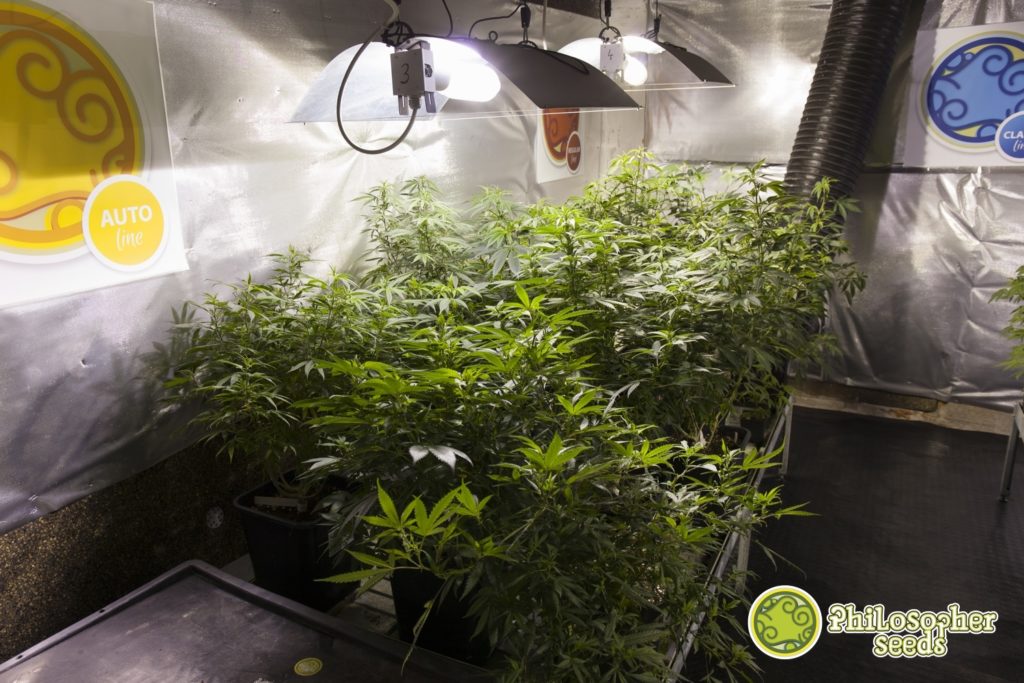
Grow lights for flowering cannabis
At this crucial stage, plants develop buds and seeds due to an increase in the number of hours of darkness, which is normally set at 12 per day (as we already saw in our article on indoor cannabis cultivation basics). To emulate Nature, growers normally use lamps with more red in their spectrum, of orange color. This change in the photoperiod and the light spectrum, along with a considerable increase in the number of available lumens for the plants, ensure that a small plant grown with fluorescents will become a splendid plant with huge buds.
The most commonly used grow lights for the bloom phase are:
- HPS: Or high pressure sodium, are without a doubt the most popular grow lights to induce flowering on cannabis plants. As MH lamps, they're HID lights, although in this case with sodium vapor. The spectrum of these lamps is suitable for flowering cannabis, and as we said it is the most frequently used lighting system for this purpose. They also need a ballast (magnetic or electronic) and a reflector to operate properly. The most common type of bulb is the HPS 600W, enough to cover an area of 1,2 x 1,2 metres. As we have also mentioned, the distance between the bulb and the plants must be around 40-60 cm, depending on environmental factors (mainly temperature), type of reflectors used, etc. They're normally switched during the night, when temperatures are lower and can compensate the heat emitted by the lamp. Recently, 1000W Double Ended HPS systems have appeared on the market, which have a connector at each end of the bulb. They're mostly designed for light penetration, so they're placed farther from the plants than conventional 600W lamps.
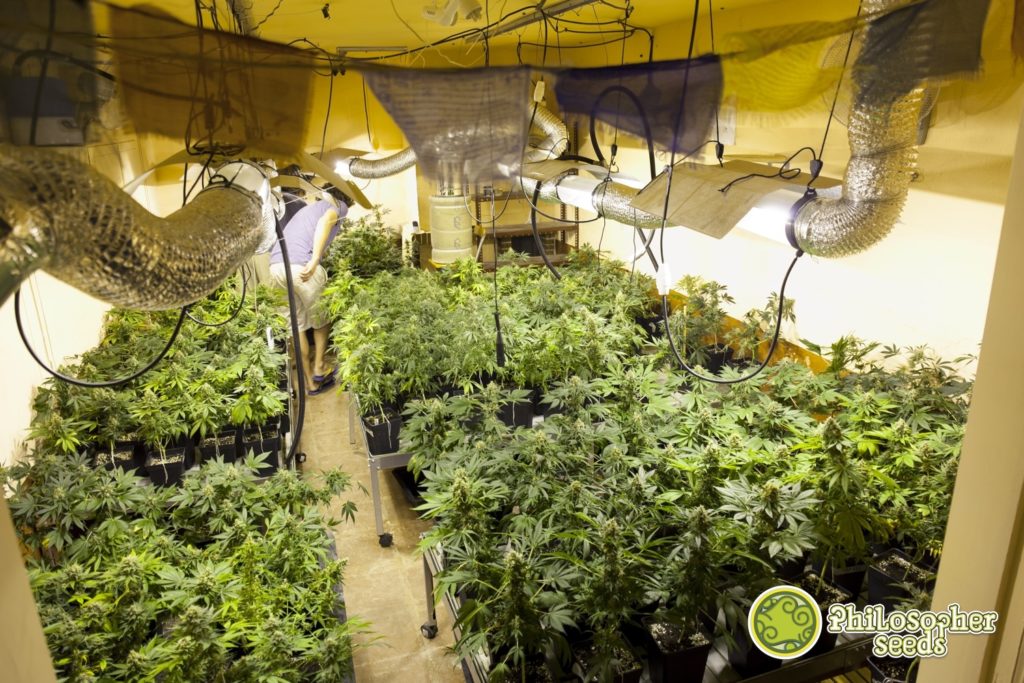
- LED: As mentioned above, one of the main advantages of LED grow lights is the possibility to change the light spectrum, so we can use a single system for both the growth and bloom of plants. They're great during summer since they produce much less heat than their equivalent in HPS lights, although this can become a problem during winter when a source of heat may be needed.
- CMH: Ceramic metal halide lamps are also a new toy on the market. They're normally found in 315W systems (or 630W double systems). They use ceramic instead of quartz (used in other metal halide bulbs), which provides a broader light spectrum, more similar to daylight. They have great results both for growing and flowering marijuana plants. As any other high intensity discharge lamp, it needs a ballast and a reflector to direct the light to the canopy.
Apart from these systems, other types of grow lights are also used, like induction lights or plasma lights, although they're normally used for experimentation purposes and are not very popular among growers who only want to grow their own pot.
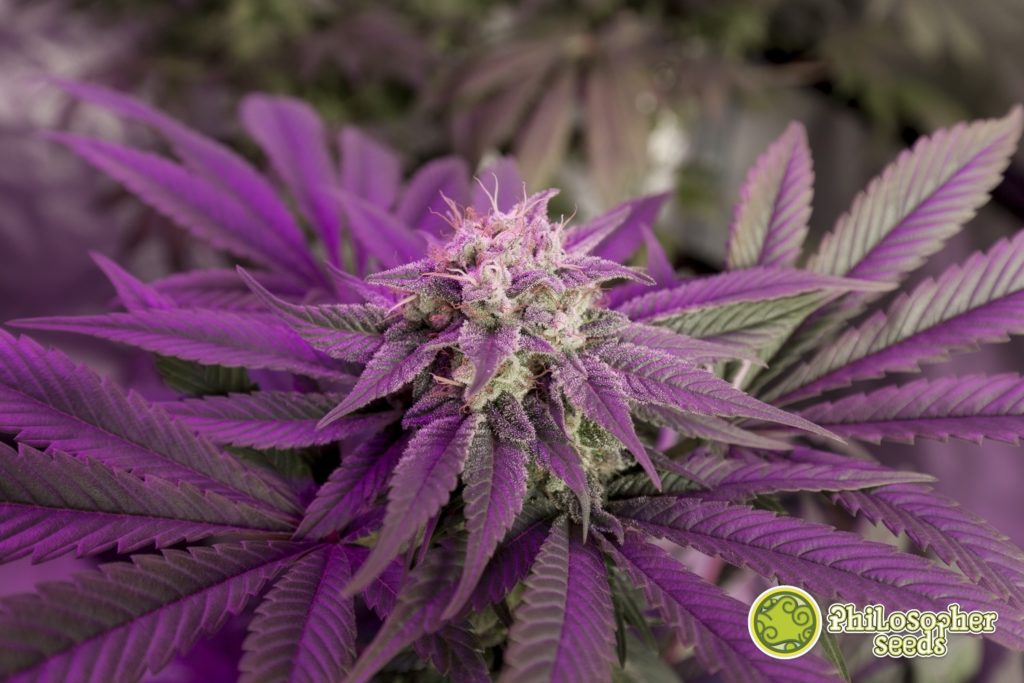
Keep in mind that all these grow lights have limited lifespan. Each type of system gradually decrease the amount of lumens produced at a certain rate, so it's normal to have splendid results with a 600W HPS lamp on the first grows and then see how yields drop after 3-4 harvests. You can check the lumens produced with a simple luxometer and replace your bulbs at the right time. When the bulb is around 60-70% of its original capacity, it is time to replace it.
Also, remember that not all strains perform well under artificial lighting. Pure strains, bred generation after generation under the sun, may have problems to adapt to indoor environments, as happens with our Early Maroc, a strain especially developed for outdoor cultivation and with incredible fast bloom. On the other hand, most hybrids developed during the last decades are suited for indoor cultivation and offer splendid results, like Black Bomb, Fruity Jack or our automatic cannabis strains.
We hope this article helped you to understand the different types of grow lights. If you have further doubts or comments leave them here and we'll reply them as soon as possible!
Happy harvests!





